


Cabbage is a cole and cruciferous crop, also a leafy green or purple biennial plant, grown as an annual vegetable crop for its dense-leaved heads. Cabbage is cultivated in about 3.69 lakh hectares with an annual production of 79.49 lakh tonnes, and in Assam with 744.75 thousand tonnes annual production. In Assam, this cole crop is extensively cultivated in all districts as major cash crops in rabi season.
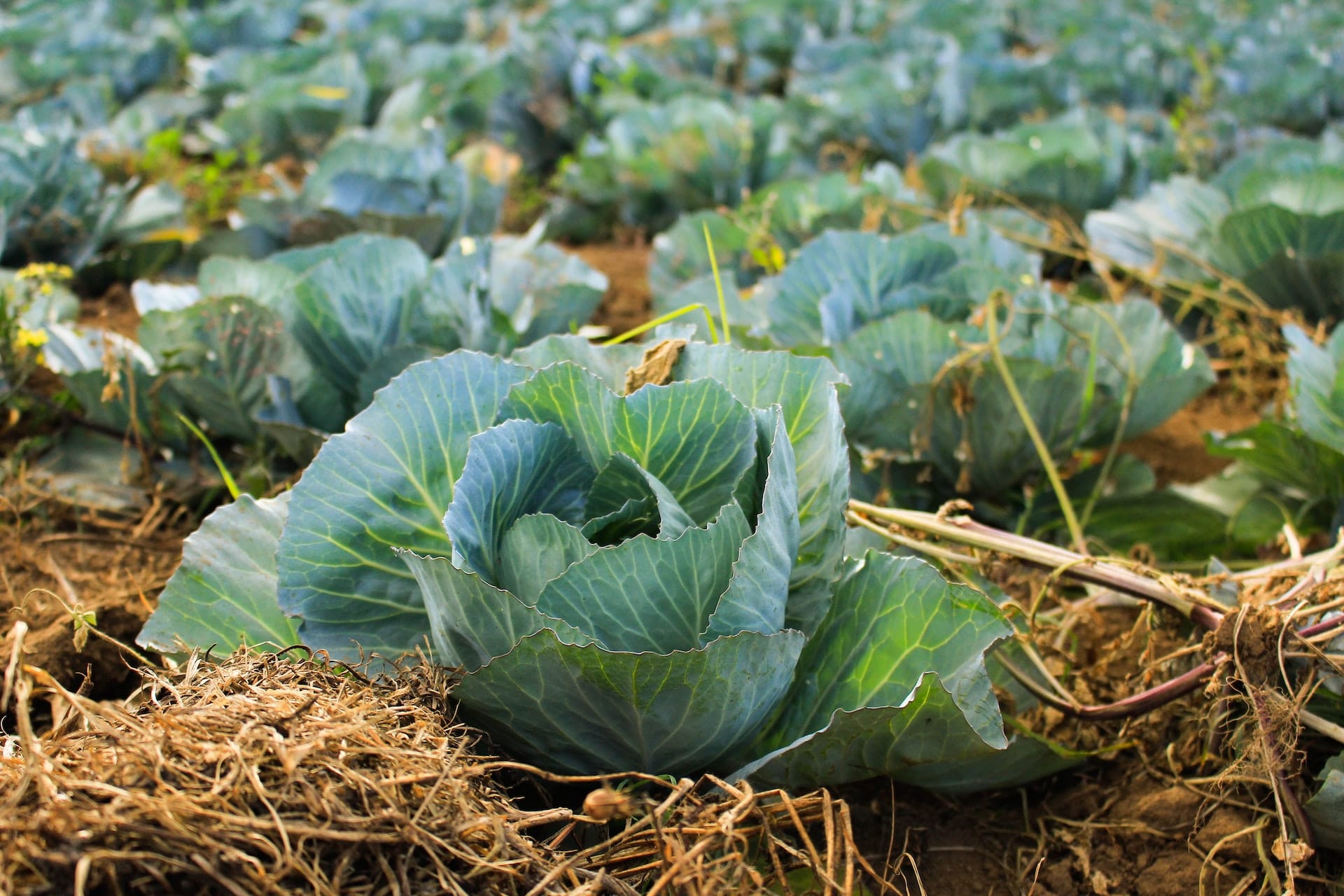


In Assam, area of cabbage is 423000 hectares and production is 9784000 MT

Cabbage requires a cool and moist climate for its growth with a temperature range of 15o-21oC for optimal growth and head formation. The intensity of flowering depends upon the age of the plants and the period for which they are exposed to low temperatures.

Well-drained sandy loam soil with pH 5.5-6.5

Plant small, compact with a few outer leaves, short-stemmed with small cup-shaped leaves, head very uniform, solid and round weighing 1.5 to 2.5 kg, interior clear white, excellent in quality, early maturity (60-70 days), yield 280 q/ha.
Characterized by small solid round head weighing 1.0 to 1.5 kg, outer leaves few and slightly cup-shaped, early maturity (60-70 days), yield 220 q/ ha.
Plant short-stalked, medium-sized, leaf light green, margin wavy, leaf blade slightly puckered, head slightly flat, maturity 65 days. Average yield is 250 q/ha, resistant to black rot, suitable for salad purpose.
Head large, drum-shaped, loose, late maturity (80-100 days), yield 450q/ha.

First week of September to last week of November.
FYM @ 10 t/ha, N 120 kg/ha, P2O5 60 kg/ha, K2O 60 kg/ha, and Borax 8 kg/ha
For the kitchen garden, half of N and whole of P2O5 and K2O may be applied by ring method around the plant at 15 days after planting and the other half of N at 30 days after planting.

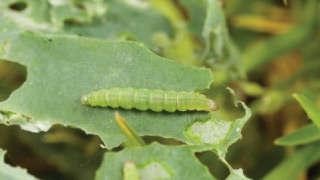
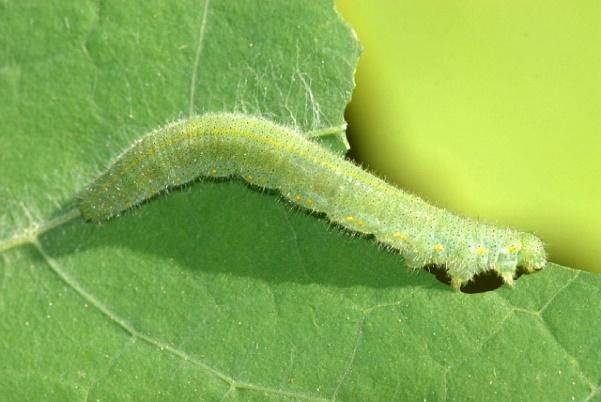
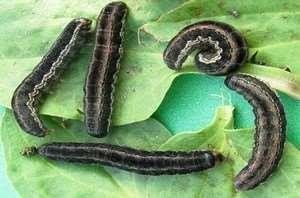
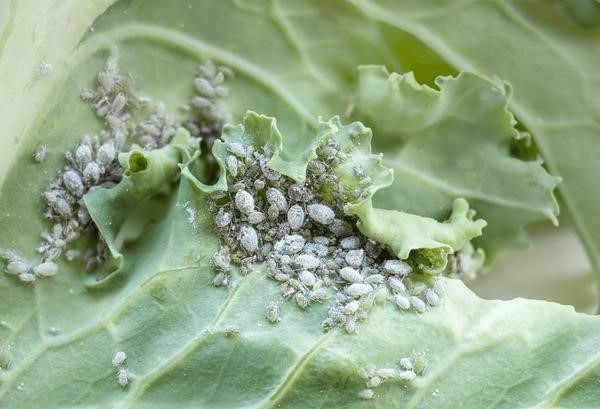
Small, dark specks first develop on leaves and later enlarge into circular, tan spots (0.25-0.5 inch in diameter)
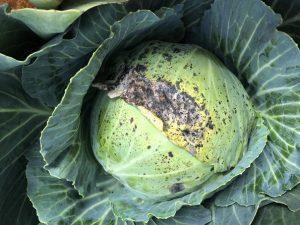
Spray chlorothalonil 75 WG formulation @ 150 g per 0.15 ha @ 75 liters spray volume (i.e. 2 g per liter of water)
Small, water-soaked areas appear and rapidly enlarge.
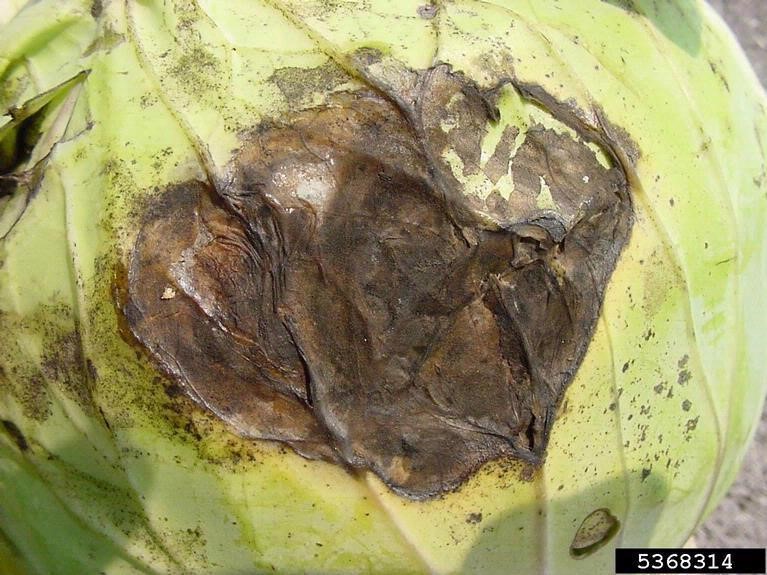
Drench base of plants with Trichoderma and Pseudomonas formulations @ 10 g per liter of water.
The first symptoms are usually yellow V-shaped lesions at the leaf margins. As the diseased area of the leaf expands and turns brown, the leaf veins in the affected area may appear black.
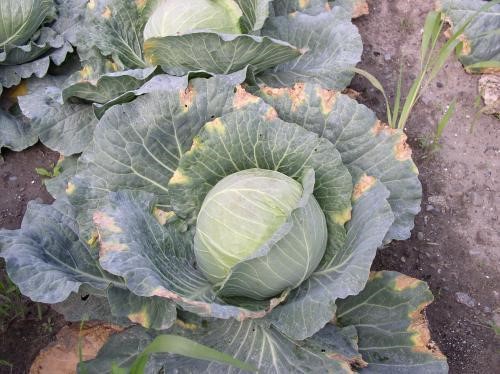
Drench base of plants with a mixture of asafoetida @ 75 + turmeric @ 375 g in 750 liters of water for 0.15 ha (i.e. 0.1 g asafoetida and 0.5 g turmeric per liter of water).

Harvesting time for cabbage is 90 – 120 days after planting. The crop should be harvested promptly after the heads are firm and mature. Delay in harvest, even by a few days can result in split heads and increased incidence of field diseases. Harvesting immature heads, however, reduces yield and the heads are too soft to resist handling damage. The shelf life of immature heads also relatively shorter than mature heads. The head is harvested by tilting the head to one side and cutting it with a knife. The stalk should be cut as close to the head as possible, yet long enough to retain 2 – 4 wrapper leaves. The head should not be removed by snapping or twisting it since this practice damages the head. Broken stalks are also more susceptible to decay. As the heads are not ready for harvest at the same time, therefore they are harvested in stages based on the maturity of the heads. Harvested produce should always be stored in shade before packing.
Jorhat, PIN - 785013 Assam